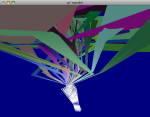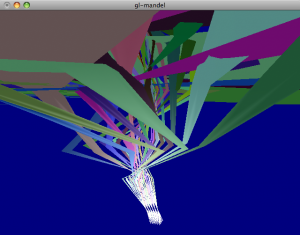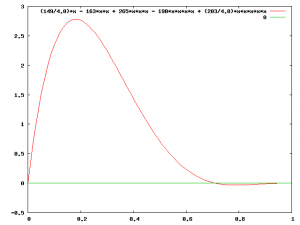I was at a party last night. I mentioned to someone that I was a math geek.
She asked, What kind of math are you into now?
I said, I really want to learn about Clifford Algebras.
She replied, What are they like?
Me, I did the deer in headlights thing. I had no idea of her math level. I had my doubts that she’d ever done Calculus. I would guess that the quadratic equation was the defining aspect of what she thought of as Algebra
. I didn’t know where to start.
In thinking back now, I could have at least said something constructive.
What I Could Have Said
So, the algebra you learned about in high school was just the tip of a huge body of mathematics. If you take away the idea that you have to plug a number in for x and just look at the what you can do with the x‘s still in there, there is a whole structure going on. At more advanced levels, mathematicians work with those structures and other structures like them.
Do you know what a vector is? One of the easiest ways to think about it is this. Suppose you’ve got a number on the number line. You can kinda think of that number as a one-dimensional vector. It tells you which direction to go (positive or negative) from zero and how far to go. Now, if you take something with more dimensions than a line, like a a two-dimensional surface or three-dimensional space, you can still have the idea of what direction to go from zero and how far to go. You just have to broaden your idea of which direction to go
.
So, the algebra that you did through high school is all centered on having x represent a number (a one-dimensional vector). But, things get a lot hairier if you let x represent a three-dimensional or an eight-dimensional vector. People generally agree about how to add vectors. Now, you’ve got to pick some way to multiply two vectors together.
Clifford Algebras are one system for multiplying vectors together.
If No One is Hyperventilating, Continue…
You can multiply a number by a vector to get another vector. You can also multiply a vector by a vector to get a bivector. You can multiply a vector by a bivector to get a trivector. Etc. Actually, the etc.
is misleading there. It doesn’t go on forever. With Clifford Algebras, you have to pick how many dimensions your vector has. You can’t multiply a three-dimensional vector by a four-dimensional vector.
Plus, if you started with a two-dimensional vector, then bivectors are as big as you get. If you multiply a two-dimensional bivector by a two-dimensional vector, you get a two-dimensional vector. If you multiply a two-dimensional bivector by another two-dimensional bivector, you just get a number.
But, all of this is probably more than you wanted to know…. at a party….



